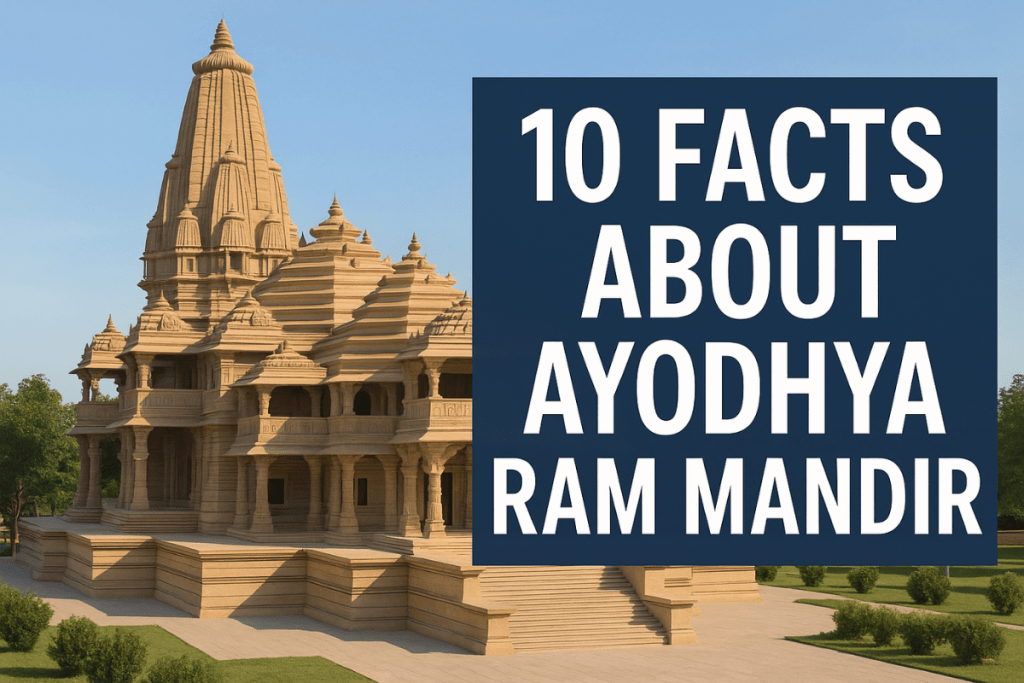The Ram Mandir in Ayodhya received thousands of devotees per day, all eager to worship their beloved Ram Lalla at the sacred site of his birth. While most of you may be aware of the history behind Ram Mandir, how much do you really know about its construction? Let us look at some of the lesser-known and unique aspects of the Ayodhya Ram Mandir.
Fact 1: Ram Lalla Idol

This idol depicts Lord Rama as a five-year-old. Photo by Saurabh Solanki on Unsplash
Arun Yogiraj, a sculptor from Mysuru, created the idol of Ram Lalla that was installed in the temple’s main sanctum. It is carved from a single piece of Krishna Shila black stone. One of this material’s unique properties is that it does not react to liquids that are commonly used during worship, such as milk and water.
Fact 2: Strengthening International Ties
Lord Rama is an important part of Thailand’s spirituality and culture. In fact, Ayutthaya in Thailand was named after Ayodhya. To commemorate the building of Ram Mandir, soil from Ayutthaya was used during the inauguration ceremony.
Fact 3: Behind the Masterpiece
The Mandir is designed by the Sompura family, who have designed many temples in the world, including the Shree Somnath Temple in Gujarat. The project was led by chief architect Chandrakant Sompura and his sons Nikhil and Ashish.
Fact 4: Ancient Methods Used
No iron or steel was used in the construction of the Ayodhya Ram Mandir. Instead, the use of traditional building techniques was prioritized as a commitment to tradition, authenticity and sustainability.
Fact 5: Accurate to Tradition
Each brick used in the construction of the temple contains the inscription ‘Shri Ram’. This practice dates back to the construction of the Ram Setu and is believed to make the brick tougher and more durable.
Fact 6: High-Quality Construction
The Mandir is built with Bansi Paharpur Pink Sandstone from Rajasthan. Granite was used elsewhere to strengthen the temple foundation. White Makrana marble and colored marble were utilized for the Mandir’s exquisite inlay work.
Fact 7: Sacred Soil
The foundation of the Ayodhya Ram Mandir uses soil from 2587 sacred sites across India, including Jhansi, Chittorgarh, Bithoori, Yamunotri, and even the Golden Temple.
Fact 8: Stylistic Choices
The Ayodhya Ram Mandir is built in the Nagar style and has three floors and a total of 392 pillars and 44 gates.
Fact 9: Preserved For Eternity
A time capsule was buried 2000 ft below the Ayodhya Ram Janmabhoomi temple. It contains a copper plate with information about Ayodhya, Lord Rama, and the temple.
Fact 10: Devotion In All Directions
Inside the temple complex, there is a Mandir at each of the four corners. These four temples were dedicated to Surya Dev, Devi Bhagwati, Ganesh Bhagwan and Bhagwan Shiv. additionally, there is a Mandir of Maa Annapurna in the north and a Mandir of Hanuman ji in the south.
Experience the Grace of Ram Janmabhoomi
At AyodhyaAstro, we perform all our poojas and mantras in the divine birthplace of Lord Rama. Our pandits are trained and experienced in the ancient rituals and scriptures. Book an online puja today and experience the grace of Ayodhya from anywhere in the world.
Frequently Asked Questions:
No, phones and other electrical devices are not allowed in Ram Mandir to ensure security and improve the darshan experience.
Electronic items (phones, smartwatches, chargers, etc.), bags or purses, footwear, flowers or prasad from outside, leather items, tobacco, lighters, and wearing outfits that are flashy or contain political slogans are not allowed inside Ram mandir.
The sale of meat, liquor, and advertisements for paan and gutkha are not allowed along 14 kilometers of the Ram Path road that leads to the mandir.
To date, ₹2150 crore has been spent on the construction of the Ram Mandir in Ayodhya. The money spent was raised through public donations, which exceed ₹3000 crore.
Entry to Ram Mandir is free for all, but devotees can purchase special passes for special darshan experiences. A General Darshan pass costs ₹50–₹200, while VIP Darshan passes cost ₹1000.



